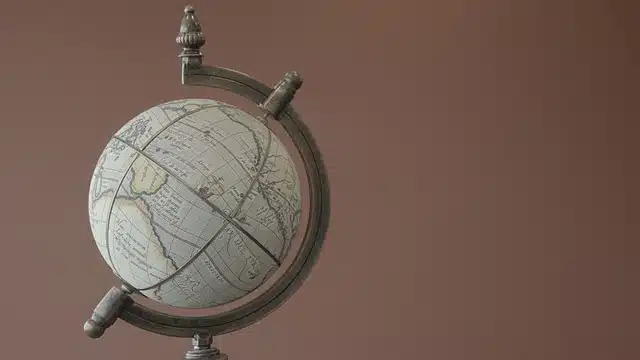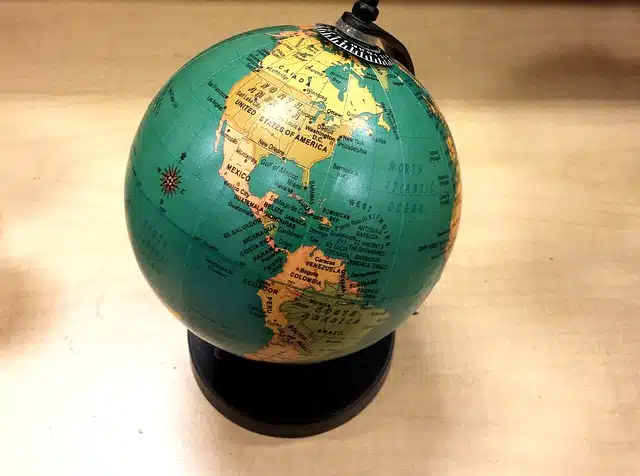
The globe represents planet Earth.
Globe , from the Latin globus , is a spherical surface whose points are equidistant from the center . The term can be used to identify various objects, such as a toy, ornament, or aircraft.
Terran , for its part, is a concept composed of the Latin words terra ( "earth" ) and agua ( "water" ). The notion is applied with reference to the globe or terrestrial sphere.
What is a globe
The globe , therefore, is a sphere on whose surface the arrangement that the lands and seas have on planet Earth is represented. It is a three-dimensional scale model of our planet that is used for scientific, educational, recreational or ornamental purposes.
For example: “When I was little, I spent hours looking at the globe,” “My uncle gave me a globe to decorate the library,” “The teacher asked me to find three European countries on the globe.”

The globe is a three-dimensional scale representation.
Historical development
A globe built by Martin Behaim in 1492 is the oldest surviving globe today. The first globe representing the lands that Europeans knew after the voyages of Christopher Columbus and other explorers dates back to 1507 and corresponds to Martin Waldeseemüller .
However, although it is the oldest that has been managed to reach our days, it is not the oldest. And since time immemorial, man has needed to construct globes in order to understand the planet he was on and how it worked.
Thus, it is considered that figures such as the Greek cartographer and philosopher Crates of Malos carried out the creation of these aforementioned objects. Specifically, this character is considered the first person to build a globe. He did it in the middle of the second century BC. C. and it stood out because it included places such as, for example, the Antipodes .
In the same way, it is also interesting to know that since then and until Martin Behaim 's was shaped, there were other equally interesting globes. Among these would be, for example, the one made in the 9th century for the Caliph Al-Ma'mun , which inspired the work "The Thousand and One Nights" , and which was characterized by having a high degree of perfection.
Likewise, we must not forget the globe that was created in the year 1267 , in the Asian city of Peking , by the Persian Jamal ad-Din .
Features of the globe
Typically, the globe is placed on an angled support. In this way it can represent the planetary angle in front of the sun and the rotation of the Earth, which helps to visualize how the days pass.
It should not be overlooked either that the globe has the aforementioned appearance because, in this way, it significantly facilitates what is not only the analysis of how the change of days is carried out but also of the seasons of the year. anus.
Globes generally present parallels and meridians so that different locations can be located more easily. Some balloons include relief to show the topography or use different colors to make the elevations noticeable.
